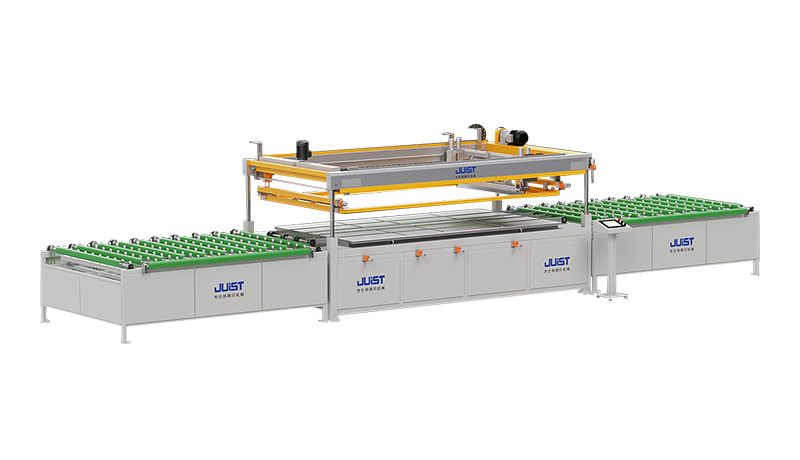+86-519-83387581
Still worried about inaccurate color registration? The dual-station system gives the perfect answer
In the glass products industry, accurate registration has always been a bottleneck problem restricting the production of complex patterns. The latest fully automatic two-color glass screen printing equipment integrates the traditional process that requires multiple processing into a single completion through a revolutionary dual-screen rotation system. When the first color is printed, the high-precision turret mechanism completes the screen switching within 8 seconds, and cooperates with the visual positioning system to achieve a registration accuracy of ±0.01mm. This innovative design not only solves the problem of cumulative errors in traditional processes, but also increases the production efficiency of complex patterns by more than 3 times, allowing glass product decoration to bid farewell to the era of "waiting for drying".
Manual machine adjustment becomes history? Intelligent system autonomously optimizes printing parameters
Imagine that the equipment can automatically identify the characteristics of the glass substrate and recommend the best printing solution. The AI process database equipped with this fully automatic system stores the optimization parameters of hundreds of glass material and ink combinations. When the new material is put on the machine, the intelligent visual system automatically analyzes the surface characteristics and completes the adaptive adjustment of 12 key parameters such as scraper pressure, printing speed and off-grid distance within 3 minutes. The operator only needs to input the design draft, and the machine can independently complete the whole process from trial printing to mass production, compressing the traditional adjustment process that takes 2 hours to an incredible 15 minutes.
Will two-color inks interfere with each other? Innovative curing solutions solve industry problems
The most headache-inducing problem of inter-color contamination in traditional two-color printing has been completely solved in this system. The patented inter-color curing module uses a UV-LED light source with a specific wavelength to make the first layer of ink reach a "semi-cured" state - the surface is stable enough to carry the second layer of printing, and the bottom layer remains active to ensure the final overall adhesion. What's more clever is that the independently developed ink formula system allows the two colors to form a molecular-level interlocking structure after curing. The test results of Baige show that the inter-layer bonding force is more than 50% higher than the traditional process.
Architectural glass can only be printed in monochrome? The artist's palette is being redefined
In a high-end commercial complex project, the two-color gradient curtain wall glass produced by this equipment is subverting people's perception of building materials. By precisely controlling the superposition ratio and transparency of the two-color ink, the artistic effect that previously required manual painting is achieved. From the three-dimensional presentation of the corporate LOGO to the detailed reproduction of cultural totems, architectural glass is transforming from a functional component to an urban artwork. What's even more amazing is that these decorative layers also have excellent weather resistance. In the accelerated aging test, the color stability reaches the international top standard of ΔE≤1.5.
Environmental protection and efficiency cannot be achieved at the same time? Green manufacturing solutions provide new options
Driven by the concept of sustainable development, the equipment has delivered a surprising environmental report card: the application of the water-based ink system reduces VOC emissions to almost zero; the intelligent ink supply system controls the waste rate to less than 1%; UV-LED curing technology saves 70% energy compared to traditional mercury lamps. More noteworthy is the waste ink recovery device, which can achieve a material reuse rate of more than 90% through centrifugal separation technology. These innovations prove that efficient production and environmental protection can be perfectly unified.
The future is here: when glass printing meets smart IoT
The R&D team revealed that the next generation of equipment will achieve more breakthrough functions: by integrating conductive ink printing units, the decorative glass will also have touch sensing capabilities; develop an intelligent color matching system, designers can directly call color combinations from the Pantone color library; introduce blockchain technology to establish an unalterable quality file for each piece of glass. These innovations indicate that glass printing is evolving from a simple decorative process to a core technology for smart surface manufacturing, opening up unlimited possibilities for the construction, home appliance and automotive industries.









